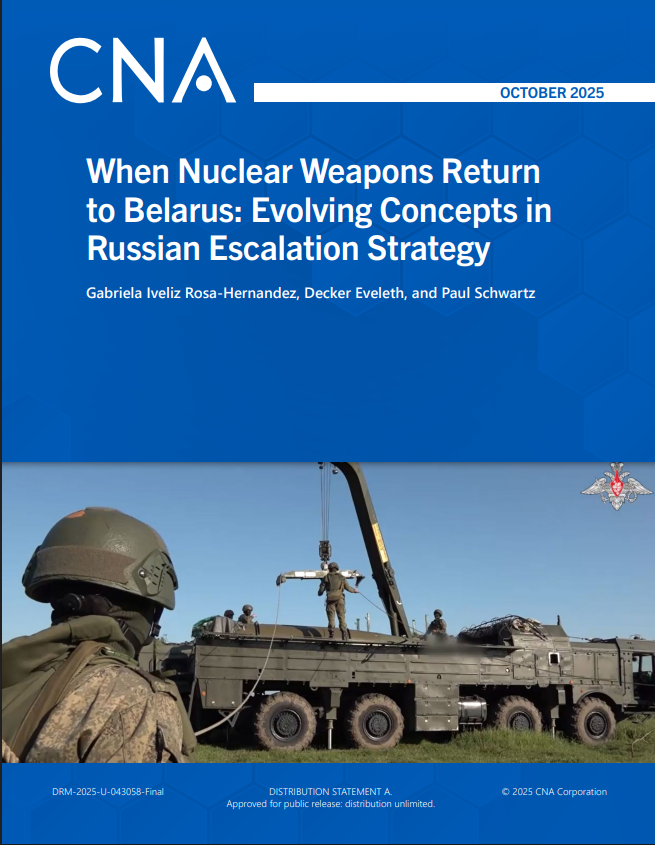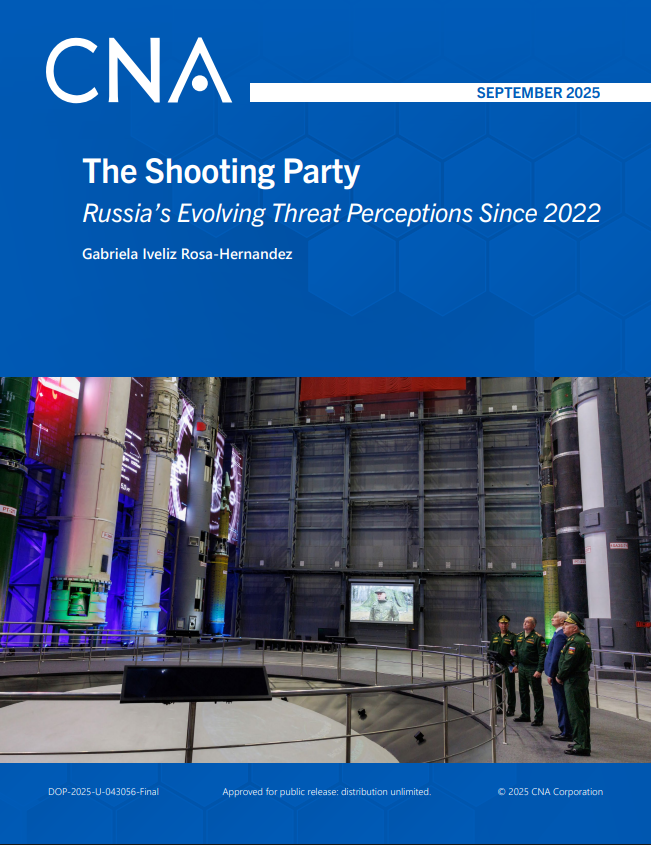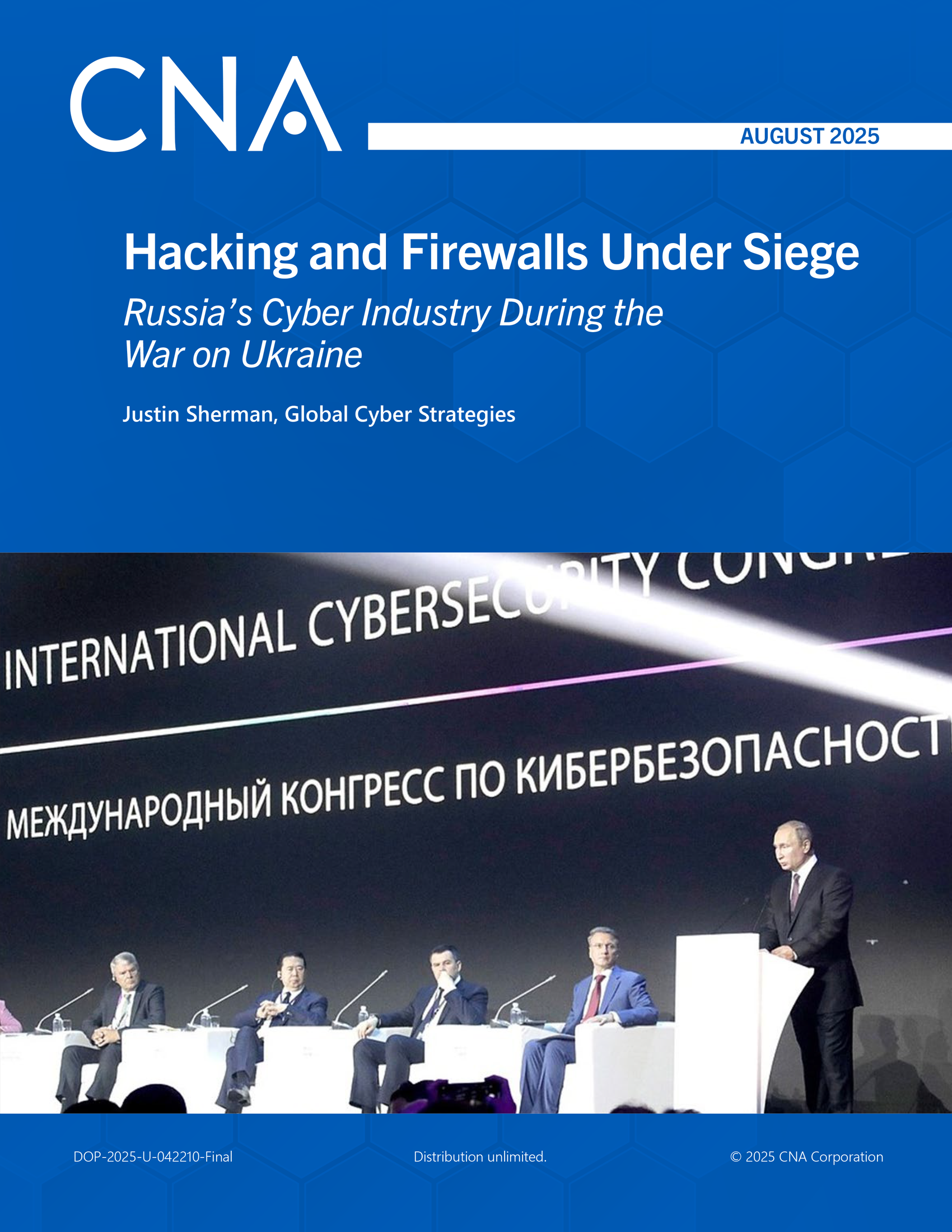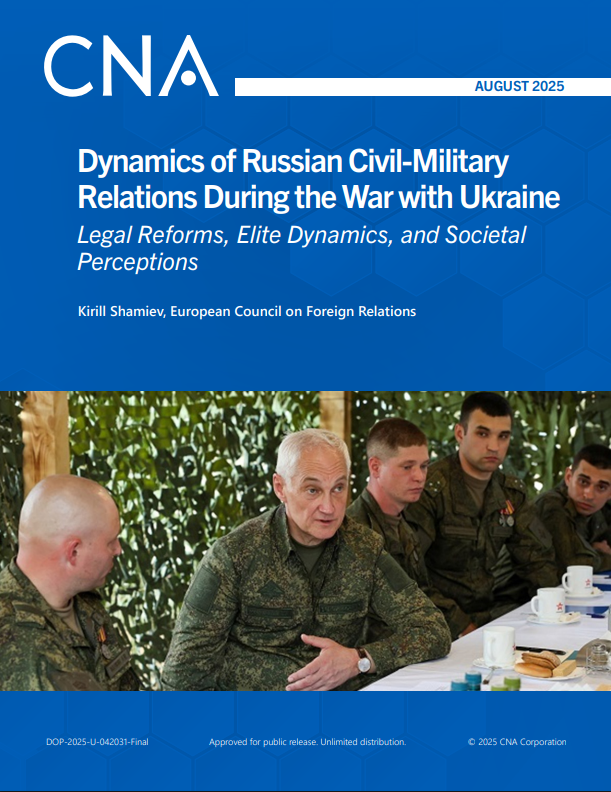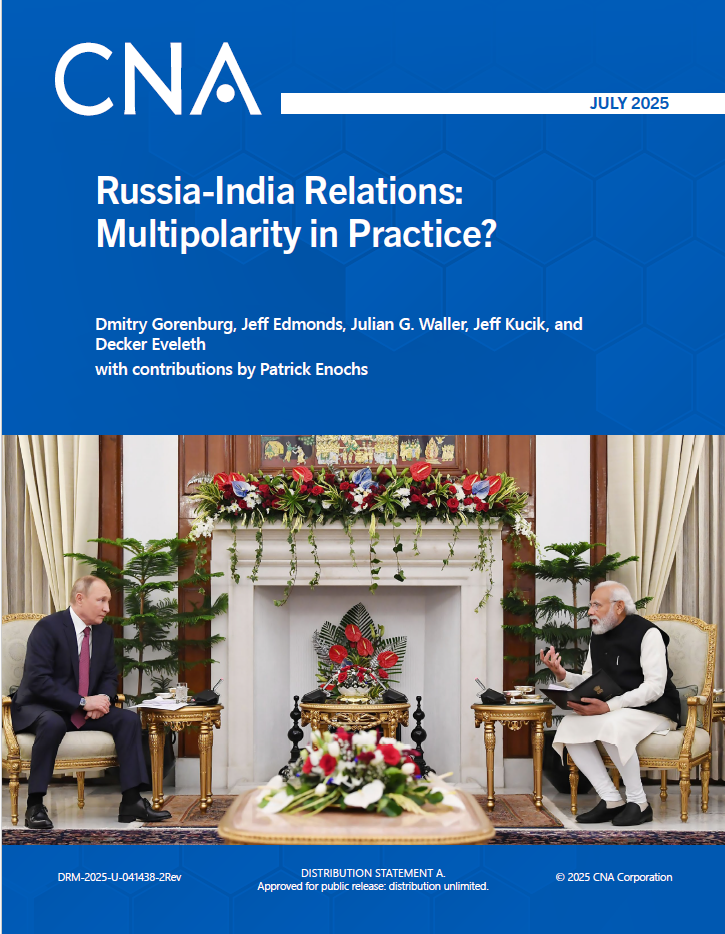Executive Summary
During the Russia-Ukraine war, the Kremlin has engaged in repeated nuclear saber-rattling in an attempt to coerce the West into ceasing ongoing military assistance for Kyiv. Russian actions included thinly veiled threats to use nuclear weapons at key times during the war. Yet Russia’s attempts at coercion were only partially successful, deterring direct Western intervention but failing to compel the West to stop the flow of military support for Kyiv.
In response, Russian military elites have argued for the country to adopt new measures to restore the credibility of its coercive nuclear signaling while engaging in vigorous internal debate on options to achieve this goal. Amid such debate, Russia’s political and military leadership have pursued a nuclear sharing agreement with Belarus, first announced in early 2022. This agreement includes the provision of Russian dual-capable delivery systems and, reportedly, the deployment of nuclear weapons to Belarus, where they would remain under Russian control. Such efforts have, in turn, raised important questions regarding the new nuclear sharing agreement’s implications for Russia’s escalation management strategy.
This paper examines the Russia-Belarus nuclear sharing agreement to determine how Russia’s escalation strategy may be evolving. We employed two complementary research techniques to complete this assessment: one empirical and one theoretical. For the former, we examined open-source reports regarding the deployment of nuclear weapons in Belarus, reviewed Russian nuclear doctrine, and assessed satellite imagery of Belarusian military sites involved in these deployments. For the latter, we conducted a systematic review of Russian-language defense periodicals to trace the evolution of key concepts related to Russia’s escalation doctrine and how they were applied with respect to Belarus.
By combining the two research techniques, we were able to make several key findings and to draw preliminary conclusions on the evolution of Russia’s escalation management strategy. We found that deployment of nuclear weapons to Belarus demonstrates both change and continuity in Russian thinking on escalation management. For instance, measures taken to operationalize nuclear weapons deployments to Belarus, including how Russia and Belarus are planning and exercising nuclear operations, are largely consistent with those prescribed in Russia’s prewar escalation doctrine for the demonstration period (the period preceding armed conflict). These measures include demonstrations of military capabilities, increases in combat readiness, demonstrative weapons tests, combined military exercises, and force deployments to threatened border areas. All of these were demonstrated in one form or another during operationalization of the Russia-Belarus nuclear sharing agreement.
Yet there were important changes in Russia’s escalation strategy as well in response to the escalatory challenges it faced in Ukraine, starting with the deployment of nuclear weapons in Belarusian territory in response to Ukraine, which in and of itself represents a marked departure for Russia, given its long-standing opposition to North Atlantic Treaty Organization (NATO) nuclear sharing arrangements. Russia has also taken steps to integrate Belarus more closely into its nuclear umbrella, as reflected in recent changes to Russian declaratory policies equating attacks on Belarus with those against Russia itself.
These events are not happening in a vacuum either, as Russian military elites are writing extensively on ways to modify Russia’s escalation strategy, shedding further light on the measures taken in Belarus. One article recommends explicitly that Russia position dual-capable systems outside of the country’s borders as a practical demonstration of Russia’s ability to impose immediate costs on potential aggressors. Russian military scholars are also writing extensively on ways to enhance the effects of future escalation measures using tailored approaches, preemption, and other concepts designed to manipulate Western threat perceptions. Many of these concepts are manifested in the Russia-Belarus nuclear sharing agreement.
The deployment of Russian nuclear weapons to Belarus indicates that the following changes to Russian escalation strategy, posture, and behavior have already taken place or are currently underway:
-
The deployment of nuclear weapons to Belarus, combined with changes in Russian theoretical writings, indicates an increased willingness (and a perceived need) by Russian thinkers to respond concretely to adversary actions in Russia’s near abroad and Eastern Europe, including use of demonstration exercises and strikes.
-
The forward deployment of a survivable set of nuclear weapons in Belarus is intended to complicate Western efforts to intervene in Belarusian affairs while making it harder to intercept inbound Belarusian missiles, thereby enhancing their deterrent effects.
-
Renewed Russian reliance on nonstrategic nuclear weapons (NSNW) represents a reversal of recent trends in Russia toward increased dependence on conventional versus nuclear forces.
The deployment of Russian nuclear weapons to Belarus also has important implications for European security and Russia’s escalation management strategy more generally:
-
The deployment of Russian nuclear weapons in Belarus alters the balance in Eastern Europe, making it more difficult for NATO to defend against Russian military strikes during future crises or conflicts. These systems are deployable at such short distances that NATO will have very little reaction time if they are launched preemptively against Eastern Europe.
-
The growing alignment between Russia and Belarus, including the incorporation of Belarus into Russia’s nuclear umbrella, could well lead to additional deployments of both conventional and nuclear weapons (such as the Oreshnik) to Belarus.
-
Changes to Russia’s escalation strategy and its theoretical system of conflict typologies, including new types such as proxy war, could lead Russian strategists to alter the menu of escalatory options available to Russian leaders during future crises. Such operations are likely to include more escalatory responses at lower levels of conflict, with particular emphasis on demonstrations of NSNW capabilities.
-
Although a high degree of continuity remains in Russia’s strategy for escalation management, the strategy is clearly evolving. Russia is embracing new forms of escalation management not seen since the Cold War, including new measures to enhance the credibility of its nuclear deterrence capabilities. The deployment of nuclear weapons in Belarus represents the most important of these measures because it constitutes an extension of Russia’s nuclear posture to the territory of a Russian ally. US and NATO strategists and planners should immediately take the implications listed here into consideration. Intelligence analysts and the Russia studies community should closely monitor the continued evolution of Russia’s escalation management strategy.
Approved for public release: distribution unlimited.
Details
- Pages: 38
- Document Number: DRM-2025-U-043058-Final
- Publication Date: 10/15/2025
